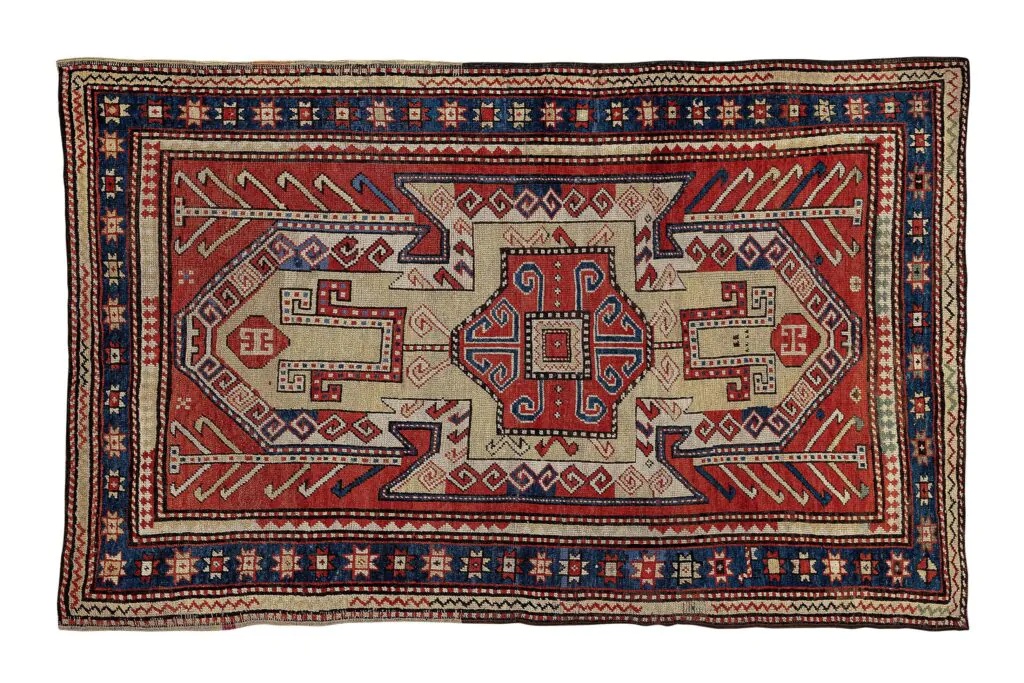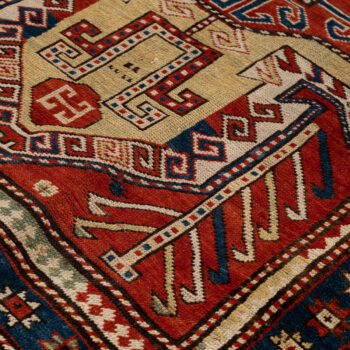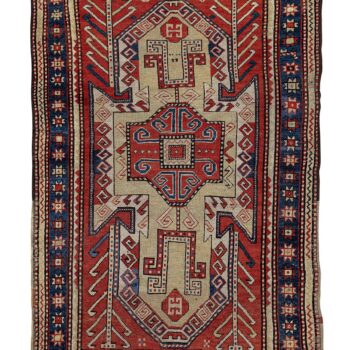Sewan
When Armenia’s borders were at their greatest extent, they comprised three large lakes: Van, Sevan, and Urmia. Today, only Lake Sevan remains located east of Erivan, Armenia, near the border of Azerbaijan and south of Tbilisi, Georgia. It was on the shore of this lake that one of the most interesting carpets in the Caucasus appeared: the Sewan.
His designs are geometric. Characteristically, Sewan rugs feature a striking shield-shaped medallion with “butterfly wings” that covers most of the area of the rug. Motifs with hooks, bushes, stars and in EE or S shapes, as well as flowers and other ornaments, are woven throughout the medallion and the background. The main border usually has stylized flowers, bushes and alternating leaves or other Kazak motifs. The smaller border has shamrocks and zigzag patterns.

Sewan artists prefer the use of strong reds, blues, greens or ivory for the center field. These colors are interchangeable between the border and the medallion. Different shades of light blue, brown, cinnamon and golden yellow are woven into the design elements and sometimes the borders and background.
Sewan rugs today are known worldwide for their artistic designs and vibrant, natural, vivid and attractive colors. They are a valuable weaving product of the Caucasus region and there is significant demand for them in the antique carpet market.

Figalli Oriental Rugs
We do not sell rugs. We bring rare works of art to your home in the form of rugs.
Our services
You are Protected
Copyright © 2023 Figalli Oriental Rugs, All rights reserved. Desenvolvido por Agência DLB – Agência de Marketing Digital em Porto Alegre


